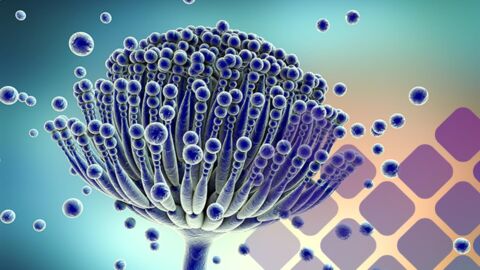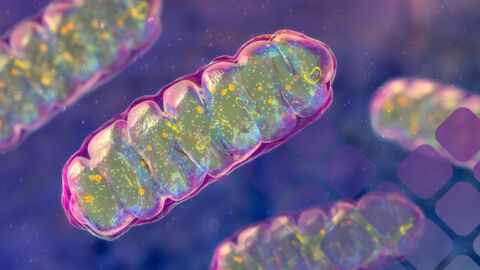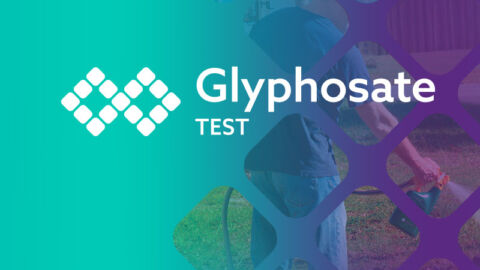Mosaic EDGE (formerly GPL Academy) has been educating practitioners for over 15 years on how to help patients heal through cutting-edge testing, research and protocols. During our recent Environmental Toxin Summit, conducted on November 6-8, 2020, speakers reviewed patient cases, explained how to use diagnostic tests for toxins, pathogens, and metabolic imbalances in their practice, and reviewed what treatments they’ve found to be effective.
The following Q+A is a response to remaining questions speakers were unable to answer during their presentation.
The material contained within this article is not intended to replace the services and/or medical advice of a licensed healthcare practitioner, nor is it meant to encourage diagnosis and treatment of disease. It is for educational purposes only. Any application of suggestions set forth in the following portions of this article is at the reader’s discretion and sole risk. Implementation or experimentation with any supplements, herbs, dietary changes, medications, and/or lifestyle changes, etc., is done so at your sole risk and responsibility.
Q: Would respiratory symptoms of mycotoxins be treatable with nebulized glutathione. What are the respiratory symptoms?
A: Nebulized glutathione would be absorbed into the bloodstream through the lungs and would then be able to form conjugates with a variety of mycotoxins and enhance their excretion. Of course, liposomal glutathione can be taken orally and be readily absorbed via the gastrointestinal tract.
Q: What is the most reliable test to confirm if the house has mold?
A: There are a wide variety of tests that can be used. Just walking around your residence with a critical eye and smelling for a moldy smell is the first thing to be done. Also, a positive urine MycoTOX Profile is a common indicator of residential or office mold since food contamination with mold is uncommon in the United States. The next step would be to check the internet for a mold inspector who can give references.
Q: Can you confirm if you need to take or stop glutathione before collection?
A: Glutathione binds covalently to most mycotoxins converting them to chemicals of new different masses that will not be detected by a mass spectrometer. Mass spectrometers detect only molecules of a specific exact mass. Furthermore, all the reference ranges for Mosaic Diagnostics were established using normal volunteers not using glutathione. So, stop any glutathione use as long as possible prior to urine collection for mycotoxin testing.
Only approximately 1% of the samples sent to our laboratory had mycotoxin results that were all negative. If glutathione were used for 5 days prior to urine collection, the results would be even lower. Sauna stimulation would not alter the mass of mycotoxins but would also alter the comparison with normal controls who did not perform sauna treatment.
Q: You mention Monascus species as a source of citrinin mycotoxin. Red Yeast Rice contains Monascus. Do we have data on the levels of mycotoxins in Red Yeast rice? Is there any cross reactivity in testing with patients on Statin medications?
A: Vendors of red yeast rice claim they use techniques to eliminate citrinin but provide no data. The Mayo Clinic website states that an older study raised the concern that some red yeast rice products contained citrinin, which can cause kidney failure but that a more recent study of 14 red yeast rice dietary supplements didn’t find citrinin in any of them. Monascus purpurea is the species of mold found in red yeast rice. Red yeast rice produces a cholesterol lowering compound identical with the drug lovastatin.
Q: I have a client with recent results ochratoxin 106.65, Mycophenolic 175.01 & citrinin 43.30. He feeds 3 horses daily with hay & dried beets. Three years ago also diagnosed with Acute Myeloid Leukemia. Do you believe he can soak the hay & beets to minimize airborne exposure? I don’t think he will get rid of the horses.
A: I would think that his best option would be to use a very good mask or even a respirator to prevent further exposure. Your client’s values for mycotoxins are severely abnormal. Of course, he probably has significant gastrointestinal, lung, and sinus colonization by now and will likely require antifungal therapy even after he takes protective measures to reduce further exposure. Because of the carcinogenic effects of many mycotoxins, I would be suspicious that his leukemia is connected to his mold exposures.
Q: How do you know if patients are colonized?
A: Markers 2,4,5, and 6 on the organic acid test are associated with Aspergillus mold species overgrowth of the gastrointestinal tract while marker 9 is associated with Fusarium species overgrowth. Since mold organisms are commonly found in the GI tract, you may wish to make the assumption that any patient with high mycotoxins and significant clinical symptoms of mold toxicity is likely to be colonized.
Q: How long can exposure take to manifest and can symptoms take years to show symptoms?
A: Since some mycotoxins were developed as war weapons and lethal doses are commonly 20-100 mg per kg body weight, even short exposures to significant amounts of mycotoxins may cause symptoms very soon after exposure.
Q: What is the mechanism of action of phenylalanine for Ochratoxin A treatment?
A: Ochratoxin is a competitive inhibitor of phenylalanine in the phenylalanyl-tRNA-synthetase-catalyzed reaction thus preventing protein synthesis, which can be reversed by supplemental phenylalanine.
Q: What are the upper limits of measured Ochatoxin A that you’ve seen clinically?
A: I recall ochratoxin values of 1000 ng per g creatinine or more in some patients.
Q: Are there regulation groups that monitor mycotoxin food/livestock contamination? For example – does USDA Organic have a monitoring program?
A: To prevent mycotoxins from becoming an animal health hazard, animal feed manufacturers are required by the FDA to conduct a hazard analysis that identifies potential hazards within the manufacturing process and provide evidence of consistent monitoring and preventive controls for mycotoxins in animal food. The USDA also regulates some food mycotoxin contamination. However, recent publications concerning mycotoxins in animal feed indicate that regulatory actions are extremely lax. I would not feed my dog any product containing any grains.
Q: Are people that test positive for allergies to citrus fruits in fact reacting to citrinin strain mold?
A: There appears to be no relationship between citrus fruits and citrinin except for the similarity of the words.
Q: I have a patient with 1400 gliotoxin, 400 mycophenolic acid and ochratoxin. He had atrial fibrillation and 2 ablations which were unsuccessful. Thoughts?
A: All the Aspergillus species produce high amounts of oxalate which deposit as crystals in cardiac tissue, impairing the transmission of the electrical depolarization of the heart. I am strongly suspicious that the oxalates derived from mold are a (the?) major cause of heart arrhythmias.
Q: May speak with Dr. Shaw about a patient that succumbed to complications of heart disease/and metastatic prostate cancer 8/2020… and tested for several mold strains aspergillosis in 11/2018?
A: Since most mold mycotoxins are carcinogenic, I would suspect a potential mycotoxin connection to any cancer. Cardiac connection is already pretty well connected.
Q: Female grows up in environment exposed to mold. Many years pass and she has children. What are your thoughts about mold spreading to her child?
A: The transmission of mold from an infected mother to her baby in utero has been documented as a probable cause of autism. See more information here.
Q: Regarding Antifungal drugs, which one does Dr. Shaw prefer: Nystatin or Diflucan? How long do patients need to stay on the medication?
A: Itraconazole (Sporanox) and Voriconazole are the preferred drugs for treating Aspergillus and Penicillium. They’re typically used for 1-3 months. Recommended Itraconazole dose is 200 mg 3 times a day for 3 days and then 200 mg 2 times a day for 1-3 months. Both drugs may cause liver toxicity in perhaps 2% of patients and AST and ALT liver enzymes need to be done weekly to monitor patients. Almost every other antifungal drug such as nystatin or Diflucan or antifungal supplement can have some effectiveness. Retesting after 6 weeks or clearing of symptoms will determine the length of treatment.
Q: Is there a time limit for someone to take clay or charcoal? Is a month too long? 6 months?
A: Clay and charcoal commonly will bind vitamins and drugs given within 2 hours of these substances. Once the colonizing mold has been killed by antifungals, a month of binders should be adequate to remove remaining mycotoxins. You can confirm this with mycotoxin retesting.
Q: Are there any supplements that contain or mimic mycophenolic acid, that would need to be stopped prior to the mycotox profile test?
A: Only pharmaceuticals used to prevent organ or tissue rejection or to treat autoimmune disease interfere with the analysis of mycophenolic acid since these drugs are mycophenolic acid. Brand names in the USA are CellCept and Myfortic.
Q: I had a client come back with high Citrinin (44.32 with anything above 25 being positive). Are there any specific binders or anything special about this mycotoxin? This is the first time I’ve had this one come back positive.
A: Citrinin may be produced by several genera of molds including Aspergillus, Penicillium, and Monascus. All mycotoxins are treated the same.
- Remove the person from exposure by moving or remediating the home.
- Treat with antifungals to remove any molds colonizing the GI tract.
- Treat with binders such as charcoal and/or clay.
Q: Any information on the use of hypochlorous acid in a nebulizer for fungal growth in sinus cavities?
A: Hypochlorous acid is the active ingredient of laundry bleach and could be very dangerous if too concentrated. The same protocol recommended in the previous answer will clear the sinuses and the rest of the body as well.
Q: Can mold toxins cause neuro symptoms of Dystonia in a person? (movement disorder in which a person’s muscles contract uncontrollably.)
A: I have encountered mold as a major factor in almost every neurological disease including Alzheimer’s, Parkinson’s, tremor disorders, autism, multiple sclerosis, and amyotrophic lateral sclerosis (ALS). I have not tested a person with dystonia yet but I think it would be a reasonable thing to do.
Q: Family with two teenagers that share the same living space, they are homeschooled. One teenager tested very high for ochratoxin A, mycophenolic acid (360) and zearalenone (19). The father and other teenager tested normal. Does this rule out environmental exposure and focus more on food if the diets are different?
A: I doubt that the family inhabit exactly the same living space 24 hours a day, seven days a week. Often we find that only one room of a house may be mold contaminated. In addition, the child with high test results might have been colonized with mold several years in the past from exposure in a summer camp or staying at a friend’s moldy house.
Q: Are you aware of any studies pointing to association of human lipomas with mycotoxins?
A: Human lipomas have not been tested for mycotoxins like the dogs were. I will wager that if they are tested, mycotoxins will be found to be elevated in them.
Q: If you have a positive MycoTOX Profile for a variety of mycotoxins should you focus on retesting just the MycoTOX in the future to measure improvement or would you focus on retesting OAT markers such as high HVA and high HVA/VMA ratio to confirm that colonization is resolving?
A: I would repeat the MycoTox test after all the treatment steps have been completed.
Q: How often is mold colonization resistant to treatment?
A: The main problem with treatment resistance is that some molds may be resistant to certain antifungals. In those cases, higher doses of antifungals may be needed or the patient may need to change to a different antifungal drug.
Q: If the patient has a reaction or side effects due to Sporanox, what is the next drug of choice?
A: Voriconazole. Remember, however, that Herxheimer reactions due to release of toxins as the mold die and disintegrate are common at the beginning of antifungal therapy. Such reactions can be minimized by taking a spoonful of sodium bicarbonate in a few ounces of water.
Q: Do the phases of the moon or barometric pressure impact mold and bacteria in our bodies making pain or symptoms worse during these times?
A: An interesting question. However, I am not familiar with any research on the topic.
Q: Any correlation of prostate cancer or breast cancer with mycotoxin? If so, should treatment be done? Thank you for the good presentation!
A: Oxalate deposits in the breasts of humans and animals are associated with breast cancer. See more information here.
Since molds frequently produce oxalates as well as carcinogenic mycotoxins that are proven causes of many cancers, it would seem reasonable to see if breast cancer may also be a mold-related illness. There is also interest in oxalates as a cause of prostate disease. See more information here.
Q: What about pet caregivers who are touching and inhaling pet food containing molds?
A: Grains in dog food are the major sources of mold. If these dog foods are avoided, there should be no great risk. Workers in plants making the dog foods with mycotoxin-contaminated grains would be of great risk of developing mold-related illnesses.
Q: How well does zeolite remove mycotoxins? Any recommended sources? Thanks!
A: The following url is a comprehensive overview of zeolite safety: https://www.mskcc.org/cancer-care/integrative-medicine/herbs/zeolite
Q: What is the recommendation for examining a home or office or other environment for molds, and then treating?
A: There are a wide variety of tests that can be used. Just walking around your residence or office with a critical eye and smelling for a moldy smell is the first thing to be done. Also, a positive urine mycotoxin test is a common indicator of residential or office mold since food contamination with mold is uncommon in the United States. The next step would be to check the internet for a mold inspector who can give references.
Q: How does travel [from Europe] of a sample [frozen] to the lab affect the test results? How stable are the mycotoxins during transport?
A: The mycotoxins are very stable and we have tested samples from all continents.
Q: Is there any evidence of reversal of ALS when the mold is treated?
A: Reversal of ALS symptoms is plausible if mold toxicity is the only cause of the ALS. If other factors are not addressed then there can only be some improvement with mold detox.
Q: Can someone be colonized with mold WITHOUT having any allergy or GI issues?
A: Yes. Depending on the person’s IgE reactivity to mold, someone will or will not have allergic-type symptoms. Also, the GI microbial environment will dictate someone’s GI symptoms.
Q: I have a patient who is a building contractor in his 60s, runs 40 miles a week and sauna’s 3x per week. He is having ataxia. Previous addiction hx of smoking from 20-40s. His Acrolein marker is 3x normal, could this be from his 20 yrs of smoking?
A: Most likely no as acrolein’s half life is only 15-20 hours and it is excreted rather rapidly. A previous smoking history this long ago wouldn’t explain these levels. I would look for a current source of exposure.
Q: What is the best way to eliminate high levels of 2HIB, PGO, DPP, DMP found from an GPL-TOX? What source could all that come from?
A: This could all come from water. NAC and GSH will detox all of these except DMP. This has enhanced detox with the addition of pomegranate.
Q: What have you found in your experience is the connection between toxin exposure and dyslexia?
A: Toxins are neurotoxic and have been implicated in many neurodevelopmental disorders like autism, tics, OCD and also dyslexia. Please refer to these research studies linking toxicity to neurodevelopmental disorders in children: https://link.springer.com/article/10.1007/s00787-006-0596-6, https://ehp.niehs.nih.gov/doi/abs/10.1289/ehp.01109s6813, https://academic.oup.com/clinchem/article-abstract/27/6/879/5666566
Q: Does chemical exposure in children inhibit the integration of primitive reflexes?
A: Due to the neurotoxic nature of toxins and their implication in many neurodevelopmental disorders seen in children (ASD, dyslexia, etc) so the inhibition of primitive reflex integration is most likely affected as well.
Q: How did you come up with the values of normal and at what % is most harm/chronic disease typically found?
A: TOXDetect Profile® values come from NHANES data. Values at and above the 95th percentile are considered to be harmful to human health.
Q: What is the suitable time to follow up TOXDetect Profile?
A: Follow up testing should be considered 3 months after detox and removal of exposure source.
Q: Anything special before food allergy testing? Do you have them eat up lots of wheat, dairy, corn before testing?
A: Have the person continue their regular diet. If they are looking to identify if they still have an allergy they should continue to avoid the food to see if the IgG antibodies have completely reduced.
Q: What do you tell people who have a positive IgG test to a food they never eat?
A: They have encountered the food either through a food that they didn’t realize had that ingredient and that’s how they were exposed.
Q: It is often said that foods come up as a reaction if the food is being consumed regularly. Can you comment on this because it is quite confusing?
A: If the person has an immune reaction, then a food will come up positive no mater how much they eat it. Many people eat the same foods daily and don’t have immune reactions.
Q: If money is an issue for clients do you start with an Organic Acids Test and proceed from there?
A: Yes. Start with an OAT and then see where you need to go from there.
Q: If I sent the same blood profile to have the IgG Food MAP from Mosaic Diagnostics be close to results from Cyrex labs for the same blood draw? Has the comparison been done?
A: No, the comparison hasn’t been done. May be an experiment you can try.
Q: Do you differentiate between A1 and A2 Casein in this test? If someone is reactive to Casein but not to Goat’s milk does this mean that they can drink A2 milk which is related to jersey cow milk?
A: No, the test doesn’t differentiate between A1 and A2 milk.
Q: Allergy info regarding duck eggs? I see duck but not their eggs on the IgG test.
A: Duck allergy doesn’t equal a duck egg allergy, just as chicken allergy doesn’t equate to an egg allergy and vice versa. The proteins are different in the egg vs the animal. Duck eggs are not on the IgG Food MAP.
Q: Assuming you would recommend avoiding Saccro B supplementation in someone who demonstrates a positive IgG response to brewer’s yeast, is that accurate? I have found conflicting info on this topic.
A: Yes, it should be avoided as they could react negatively to the saccharomyces. It is always up to the practitioner whether to give it or not but the risk of reactivity increases when they have a sensitivity to brewers/bakers yeast.
Q: What food elevation would you see in Crohn’s?
A: Any food the person is sensitive to will populate in that person. The most common foods are gluten, eggs, soy, dairy.
Q: Can the GPL-Tox test and mycotox and OAT be sent from overseas such as China? The sample can be frozen?
A: Thank you for your interest in our laboratory. We refer all of our Chinese clients to contact our distributor: specialkidsonesource@gmail.com
Q: What do you think of broad spectrum digestive enzymes for gluten and casein intolerance? Would you recommend to strictly avoid these foods if the patients takes the enzymatic supplement?
A: These supplements can be good if someone accidently eats gluten/dairy or splurges occasionally. This shouldn’t be used for regular consumption since the digestive enzymes cannot completely avoid an immune reaction all of the time.
Q: Would you recommend gradual reintroduction of positive inmunoreactive foods after a several weeks of strict avoidance of foods giving positive IgG levels on test? Or repeat the test prior to reintroduction?
A: Either is applicable. Reintroduction is more of an active process. Testing is quicker and leads less of a risk of reactivation of symptoms.
Q: If reactivity shows for brewers yeast that means they would need to avoid any fermented bakery item?
A: Yes.
Q: If you have not had a certain food for a while, how much do you need to eat before testing and timeline?
A: This depends on what you are looking for:
- Keep same diet to assess any immune activity
- If avoidance has been completed long term and you want to assess if the immune system is still reactivity continue avoidance.
- If the person has never been tested but has been avoiding foods they should eat the food for a week prior to elicit a response if the immune system is active against it.
Q: My understanding is the Mycotoxin test is for external mold toxin exposure only. Can internal mold colonization in the body (confirmed on the OAT) alter the results of the mycotoxin test. I have some patients showing markers for colonization and we want to know if they are still being exposed to a moldy environment. Should we run the mycotoxin test to confirm that or would it be better to get their home tested for mold.
A: You should run the MycoTOX to assess level of toxin but a home mold test will tell you definitively if they are still being exposed.









